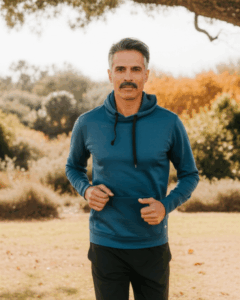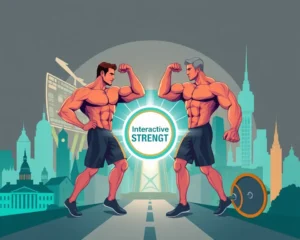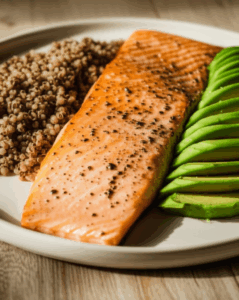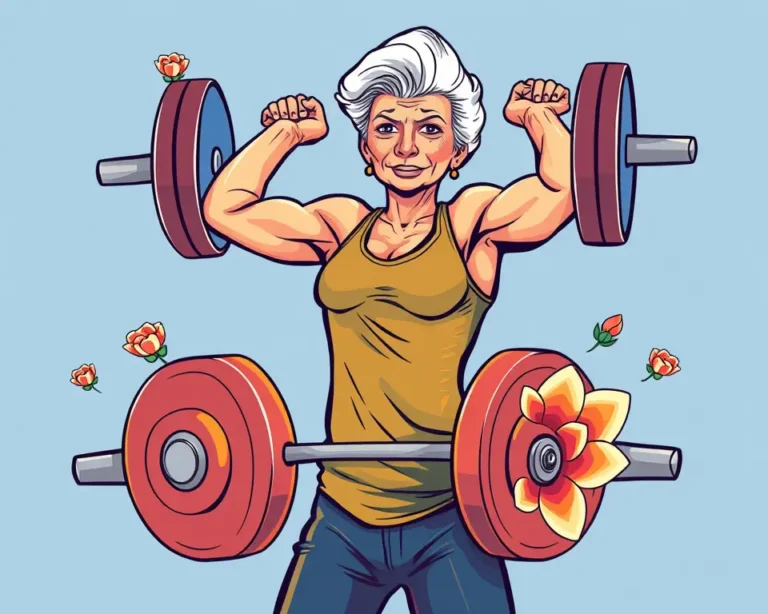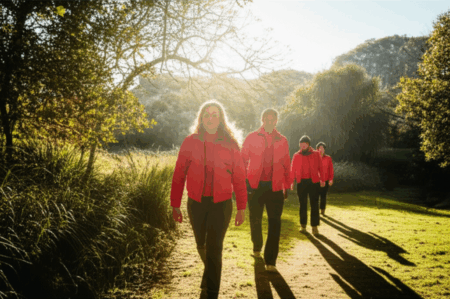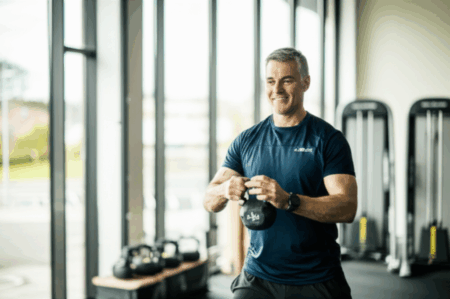Raymond Singh, a 68-year-old nationally ranked powerlifter, is proving that age is just a number. He’s not just maintaining his strength; he’s in the best shape of his life, and his bloodwork even suggests his cellular health is improving. How is he doing it? Through a combination of dedicated powerlifting, a healthy diet, and a commitment to overall well-being. His story offers an inspiring example of how strength training can benefit older adults, helping them to not only maintain but also regain their vitality.
From Out of Breath to Powerlifting Champion
Singh wasn’t always a powerlifter. A few years ago, he was struggling with high LDL cholesterol and found himself easily winded. It was a 2019 trip with his son that served as a wake-up call. He realized he needed to make a change to continue enjoying his travels and time with loved ones. Encouraged by his son, Singh embraced powerlifting, transforming his health and fitness.
The Power of Powerlifting at Any Age
Powerlifting, a form of strength training involving heavy weights and compound movements like squats, bench presses, and deadlifts, offers numerous benefits for older adults. These benefits extend beyond just physical strength, impacting mental and emotional well-being as well.
Physical Benefits
- Increased Muscle Mass and Strength: As we age, we naturally lose muscle mass, a condition known as sarcopenia. Powerlifting helps combat this by stimulating muscle growth, leading to increased strength and improved physical function.
- Improved Bone Density and Joint Health: Weight training puts stress on the bones, signaling the body to increase bone density. This is particularly important for older adults, who are at a higher risk of osteoporosis. Powerlifting can also improve joint health by strengthening the muscles around the joints, providing support and stability.
- Prevention of Age-Related Conditions: Strength training can help prevent or manage chronic conditions such as diabetes, heart disease, and arthritis. It can also improve cardiovascular health, enhance balance and coordination, and help manage weight and body composition.
- Reduced Fat Buildup: Exercise, including powerlifting, can reduce the accumulation of fat in body tissues that occurs with aging.
Mental and Emotional Benefits
- Improved Self-Esteem and Self-Image: Physical changes, including increased muscle and decreased fat, can improve self-image.
- Sense of Purpose and Achievement: Working towards and achieving strength goals can give athletes a new sense of purpose, drive, and achievement.
- Mental Well-being: Setting goals, achieving personal records, and being part of a supportive community can provide a sense of purpose and improve overall mental and emotional well-being.
- Mood Boost: Many lifters experience a boost in mood during and after workouts.
Singh’s Reverse Aging Workout Routine
Singh’s workout routine is a testament to his dedication and commitment. It’s a strenuous program designed to keep him in competition-ready shape. While his specific routine may not be suitable for everyone, it provides a valuable framework for understanding how to structure a powerlifting program for older adults.
Weekly Schedule
- Sundays: 90-minute workout starting with 20 minutes of cardio, followed by full-body exercises.
- Mondays & Fridays: Rest and recovery.
- Tuesdays: Golf or extra cardio.
- Wednesdays: 90 minutes in the gym with a 5-minute bike warmup and 45 minutes dedicated to back, hips, hamstring, and glute-focused exercises, including five sets of front squats and five sets of back squats.
- Thursdays: 90 minutes in the gym with a chest and shoulder workout, including dumbbell chest flys and reverse flys.
- Saturdays: Heaviest lifting day of the week, focused on deadlifts. Starts with two warm-up sets, working at 75 to 80 percent of his max effort, then finishes with a max-out set.
Key Exercises
- Squats: Front squats and back squats are crucial for building lower body strength and power.
- Deadlifts: This compound exercise works multiple muscle groups and is a key component of powerlifting.
- Dumbbell Chest Flys: Targets the chest, shoulders, and triceps.
- Reverse Flys: Strengthens the upper back and rear deltoids.
Important Considerations
- Warm-up: Singh always starts his workouts with a warm-up, such as five minutes on a stationary bike, to prepare his body for exercise and reduce the risk of injury.
- Proper Form: Maintaining strict form is crucial to minimize injury and maximize safety.
- Rest and Recovery: Singh prioritizes rest and recovery, taking Mondays and Fridays off from training. This allows his body to repair and rebuild muscle tissue.
- Listen to Your Body: It’s important to pay attention to your body and adjust your workout routine as needed. If you’re feeling pain, stop and rest.
Getting Started with Powerlifting After 60
It’s never too late to start strength training. Studies show that the body remains responsive to muscle-building exercises, regardless of age. However, it’s important to approach powerlifting safely and effectively.
Tips for Beginners
- Consult with a Doctor: Always check with a doctor before starting any exercise program, especially if you have any underlying health conditions.
- Seek Professional Guidance: Work with a qualified strength and conditioning coach or personal trainer who has experience working with older adults. A trainer can help you develop a safe and effective workout program, teach you proper form, and provide guidance and support.
- Start Slowly and Progress Gradually: Begin with lighter weights and fewer repetitions, gradually increasing the intensity as your strength improves.
- Focus on Proper Form: Proper form is essential to prevent injuries. Focus on mastering the correct technique for each exercise before increasing the weight.
- Listen to Your Body: Pay attention to your body and stop if you feel any pain.
- Be Consistent: Consistency is key to seeing results. Aim to strength train at least two to three times per week.
- Set Realistic Goals: Setting realistic goals can make it easier to track and celebrate your progress.
- Find a Supportive Community: Joining a powerlifting gym or finding a workout buddy can provide motivation and support.
Safety Precautions
- Warm-up properly before each workout.
- Use proper lifting techniques.
- Avoid overtraining.
- Stay hydrated.
- Wear appropriate clothing and shoes.
- Be aware of your surroundings.
The Importance of Nutrition and Lifestyle
Powerlifting is just one piece of the puzzle. Proper nutrition and a healthy lifestyle are also essential for maximizing results and overall well-being.
Nutrition Tips
- Protein: Ensure your diet includes plenty of protein, which promotes muscle growth and repair after workouts. Lean protein sources include poultry, fish, beans, and nuts.
- Balanced Diet: A balanced, nutrient-dense diet that includes protein, healthy carbs, vegetables, and fruit is necessary.
- Hydration: Drink plenty of water before, during, and after your workout.
- Vitamin Deficiencies: Talk to your provider about your nutrition habits for additional guidance, as vitamin deficiencies can impact muscle function.
Lifestyle Habits
- Adequate Rest: Make rest a top priority to allow your body to recover and rebuild muscle tissue.
- Stress Management: Find healthy ways to manage stress, such as yoga, meditation, or spending time in nature.
- Social Connection: Maintain social connections and engage in activities you enjoy.
Conclusion: It’s Never Too Late
Raymond Singh’s story is a powerful reminder that it’s never too late to transform your health and fitness. By embracing powerlifting, prioritizing nutrition, and committing to a healthy lifestyle, older adults can defy age, regain their vitality, and live stronger, healthier lives. With the right approach, powerlifting can be a safe and effective way to improve physical and mental well-being at any age.

